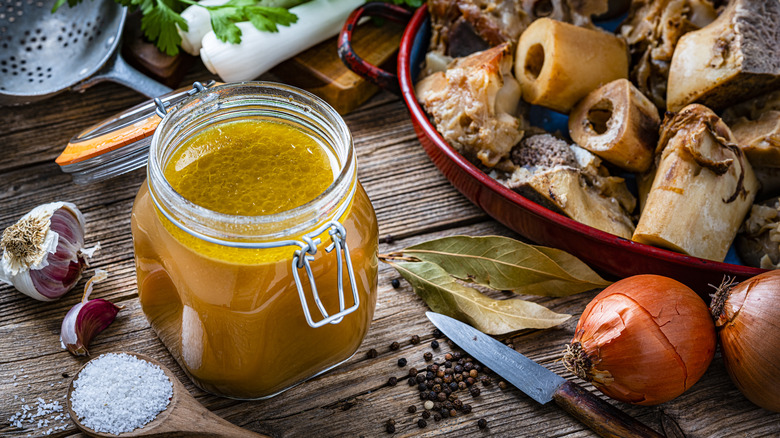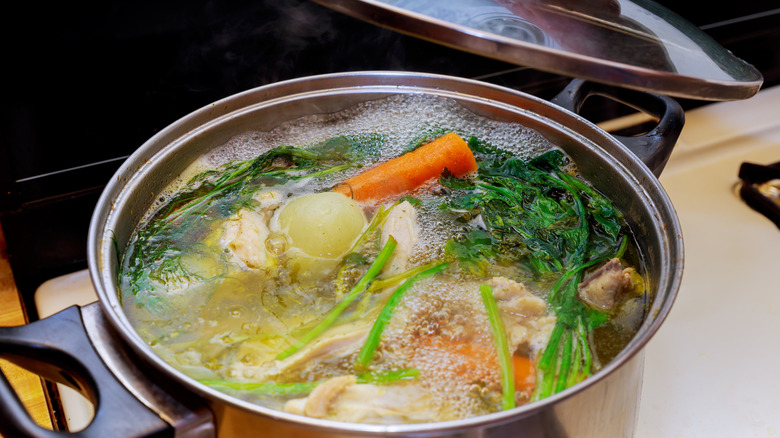How Long To Cook Bone Broth For Truly Mouthwatering Results
Gone are the days when choosing broth for soups and gravies meant a one-shelf reach at the supermarket. Now we have multiple options for chicken, beef, and turkey stocks, broths, and most importantly, the highly nutritious bone broth. Fortunately, you aren't relegated to commercially available brands — you can make your own at home.
You can make bone broth from various animal bones, including chicken, beef, lamb, and pork. Source them from a supermarket butcher or save ones from your own roasted chicken, steak, or pork roast. If possible, use high-collagen options such as neck or knuckle bones. It takes some patience, but within about 12 hours, you'll have a healthy pot of deliciousness using a mere handful of ingredients. It will happily simmer, covered, on your stovetop with only occasional intervention on your part. Cooking it for 24 hours provides even deeper flavor and more nutrients as the bones slowly break apart, infusing your broth with all kinds of goodness.
A simple bone broth requires only a large stovetop pot, bones fully covered in water, a sprinkle of salt, and some optional aromatic herbs. To help the bones dissolve, add a dash of acidic apple cider vinegar or lemon juice. Toss in a carrot or onion for more nuanced flavor. Bring the water to a boil, reduce heat, cover, and gently simmer for 12 to 24, or even 36 hours. If that sounds daunting, using a pressure cooker or instant pot reduces the time to five hours or fewer.
Why bone broth?
When it comes to cooking, the benefits of bone broth stand out pretty quickly. A deeply flavorful, dense bone broth enhances any recipe it enters, while the lucky consumer gets a dose of tasty, intense nutrients — ones often missing from standard broths. It's packed with collagen and protein from the bones, as well as electrolytes, amino acids, calcium, magnesium, glycine, and loads more micronutrients.
Bone broth jazzes up sauces, soups, marinades, stews, gazpachos, and gravies, but also enriches casseroles, pastas, rice dishes, mashed potatoes, and lentils. Just replace the water or vegetable broth typically used in the recipe, infusing your food with all that rich bone-broth flavor and powerful sustenance. It's also a warm, satisfying, broth for sipping on its own. And it works well as a cold liquid; just slip some bone broth into your morning smoothie or freeze in ice trays and pop into a savory-toned cocktail.
If you're hoping to boost specific health benefits, you can spike homemade bone broth with beneficial spices, herbs, and vegetables. A Tasting Table adaptation of a bone broth recipe by molecular biologist Kanchan Koya focuses on boosting the immune system. It employs mighty minions of Mother Nature to fight seasonal flus and colds, including turmeric root, ginger, bay leaves, star anise pods, and lemongrass. Just simmer it as long as possible to pull out the extra nutrients.

